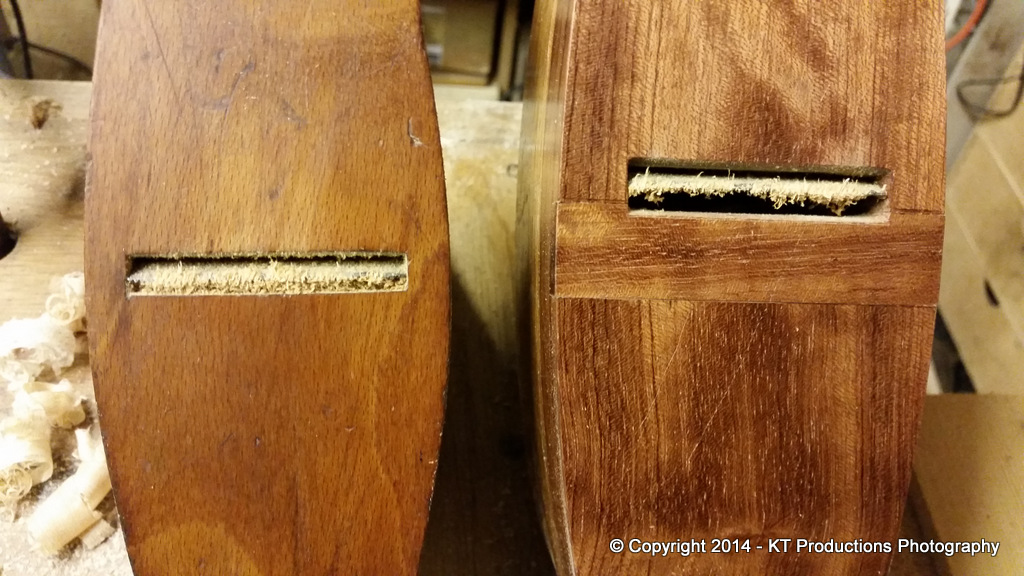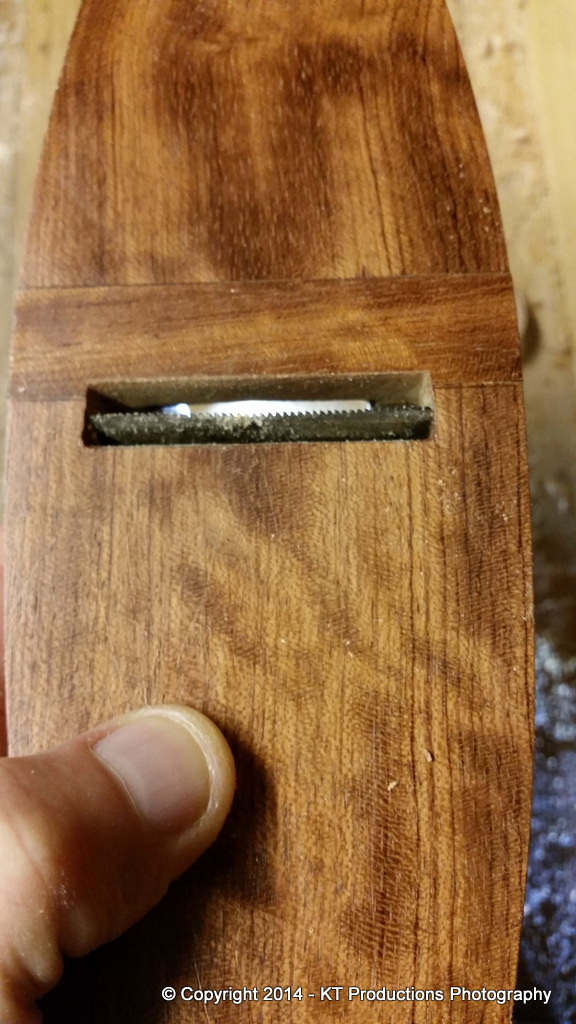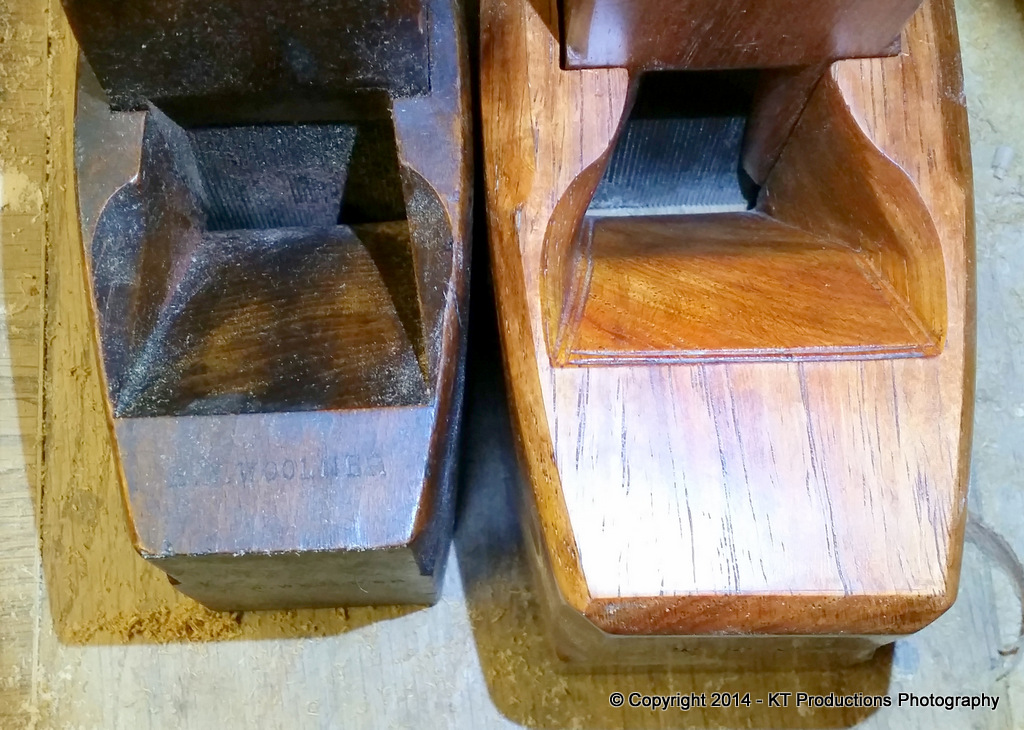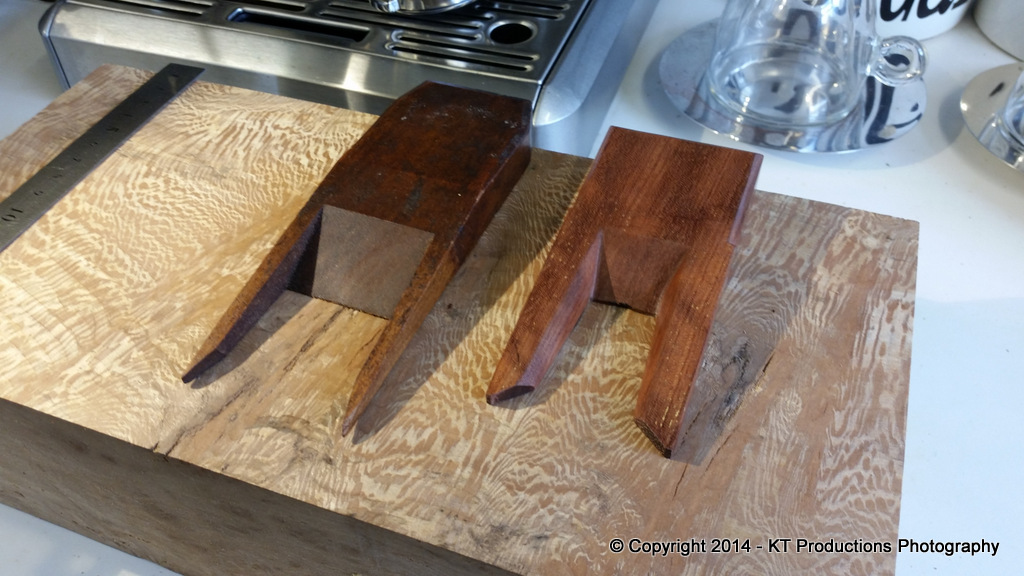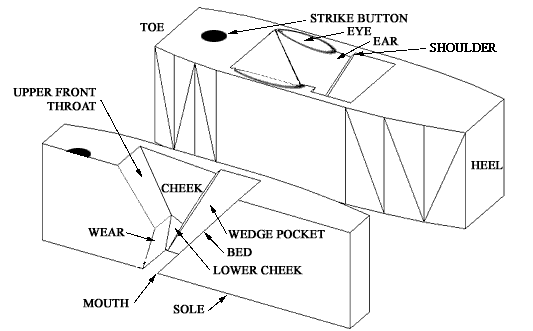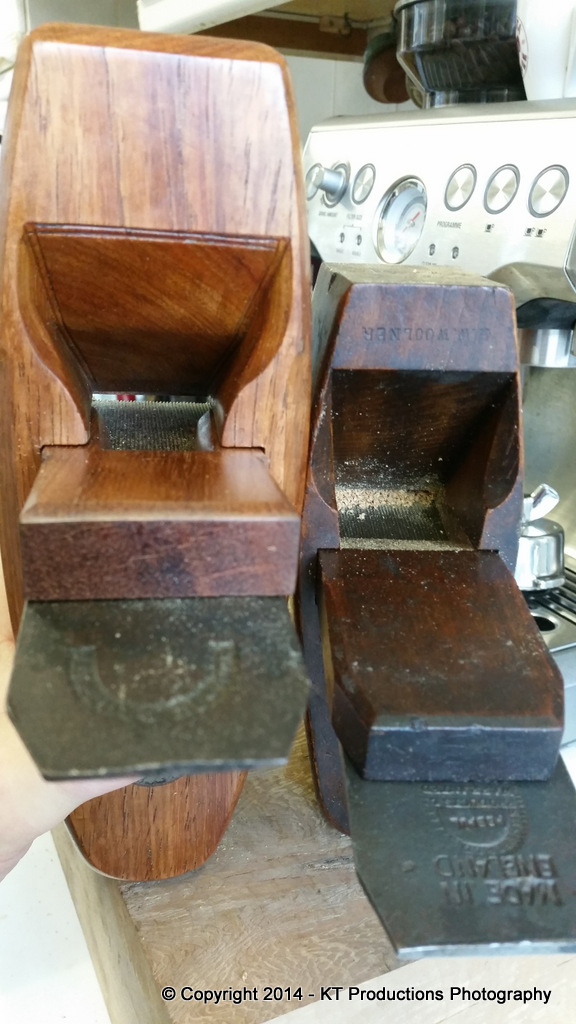jimi43
Established Member
A little while ago, I did a review of the magnificent toothing plane I received from Stewie Simpson in Australia (TTC Tools).
The recent thread on his beautiful traditional chamfer plane set me thinking....I bet there are quite a few people out there who wonder why anyone would spend their hard earned money on these...or any other bespoke tool, when perfectly serviceable originals are relatively freely available for modest sums.
So I thought I would address this by putting my views forward in the hope that others wondering the same thing can feel a bit more comfortable investing in such masterpieces.
I recently acquired a beautiful Griffiths of Norwich coffin toother armed with a rather nice Moulson Brothers toothing iron....
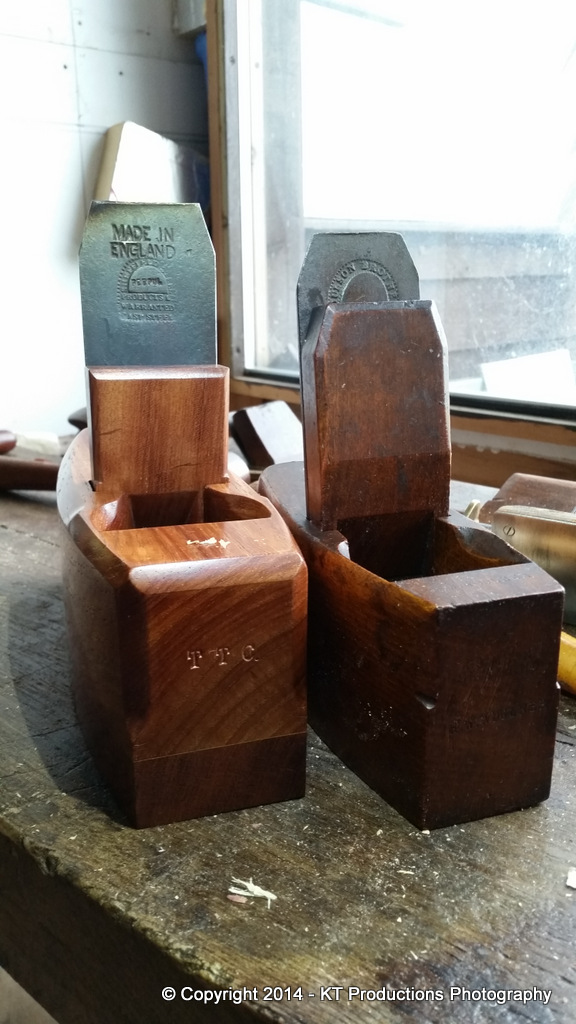
...so I was in a good position to do a bit of a comparative study and review.
Firstly, let me describe the competition.
Griffiths of Norwich were a very prolific maker 1803-1958 and I have a bit of a soft spot for them as they have documented associations with Christopher Gabriel.....my most favourite maker.
The quality is therefore given and the Moulson Brothers iron is spectacular!
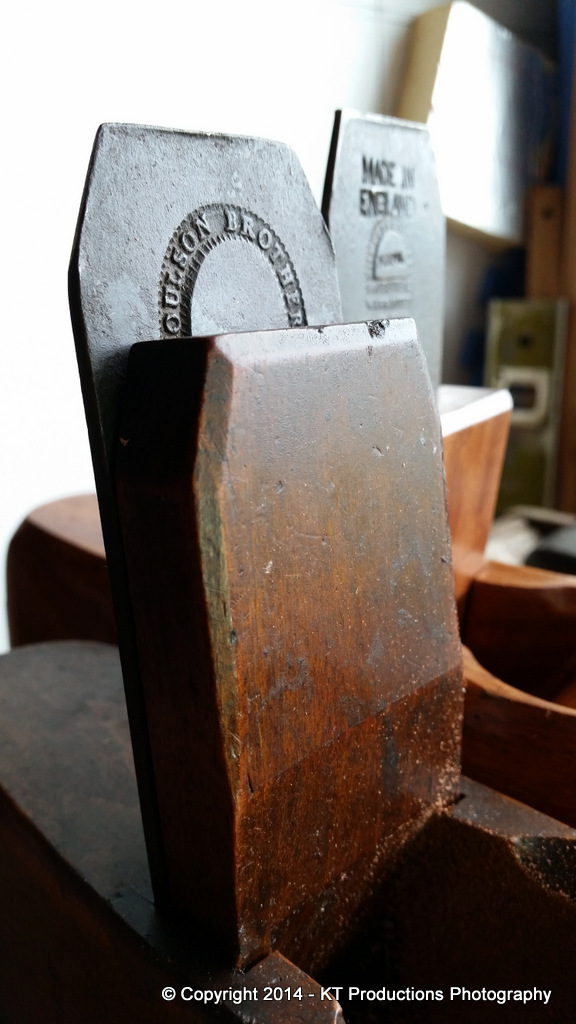
So this example of antipodean craftsmanship stands against no slouch as an opponent!
So let's compare the build quality and differences:
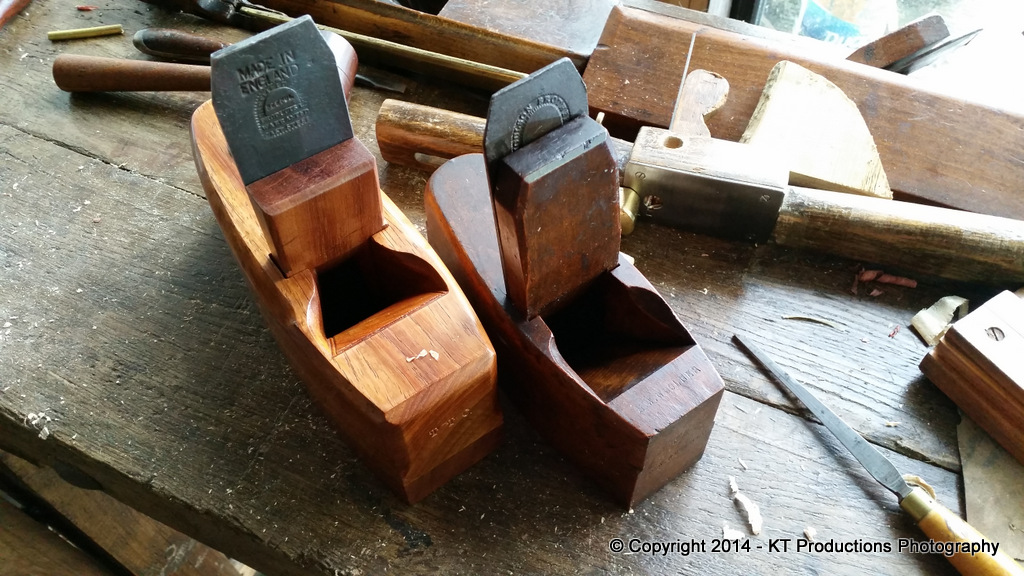
The TTC toother is substantially meatier...not exactly larger but it has more substance, partly owing to the use of beautiful hardwoods but mostly because of clever design. There is a more substantial toe section resulting from the clever throat design and this adds to the weight and positive momentum of the tool.
The Griffiths is a standard quality coffin shape...beautifully executed but a tad less positive when used.
The throat design is the part which has undergone the most development and intensive trial and testing....much of which was discussed and debated on this very forum, and I have to say taken on board. This has lead to some major and significant improvements over the tried and tested coffin throat.
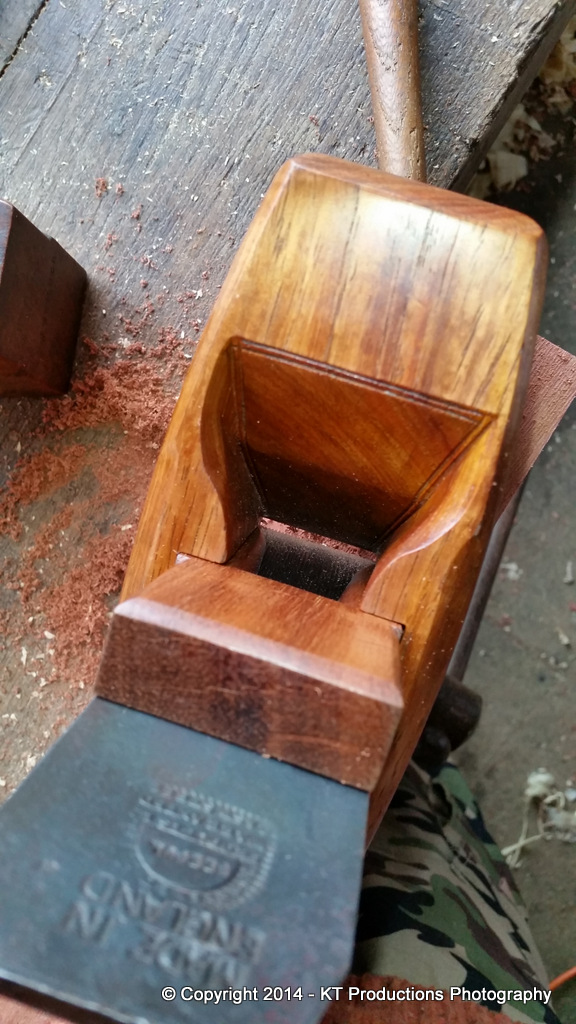
Traditional plane makers have adopted a more generic approach in making the throat. Presumably they mostly made standard coffin smoothers and in making the toothing plane in smaller numbers, merely changed the pitch of the iron, leaving the rest of the design the same.
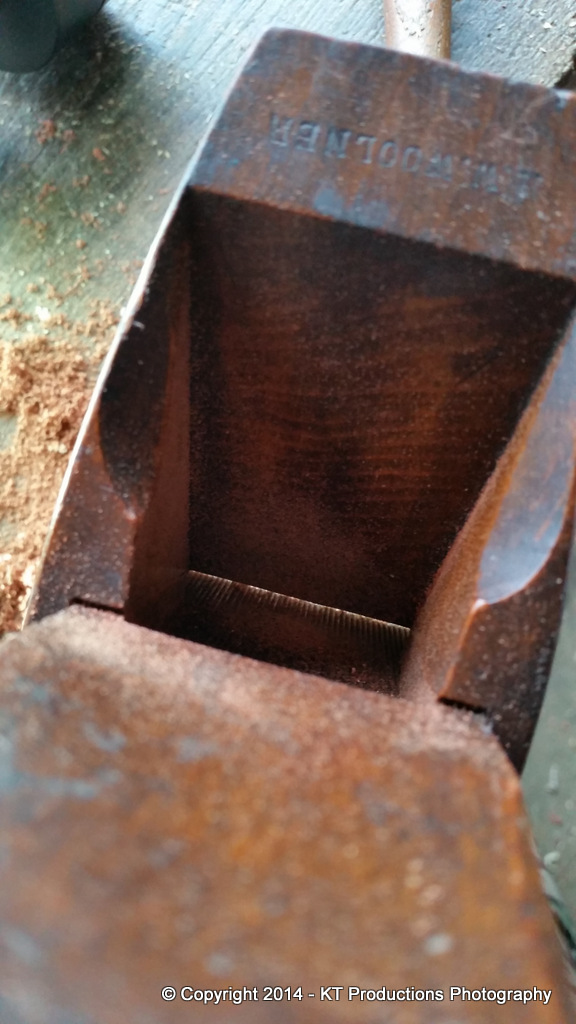
As can be seen, the mouth clearance on the TTC example is larger and the throat delicately shaped into a sweeping curve, opening out as it approaches the top of the toe. The cheeks are beautifully flared.
The results of these subtle changes are quite substantial and obvious. The Griffiths plane works fine...removing stock freely and evenly but the mouth clogs almost immediately....
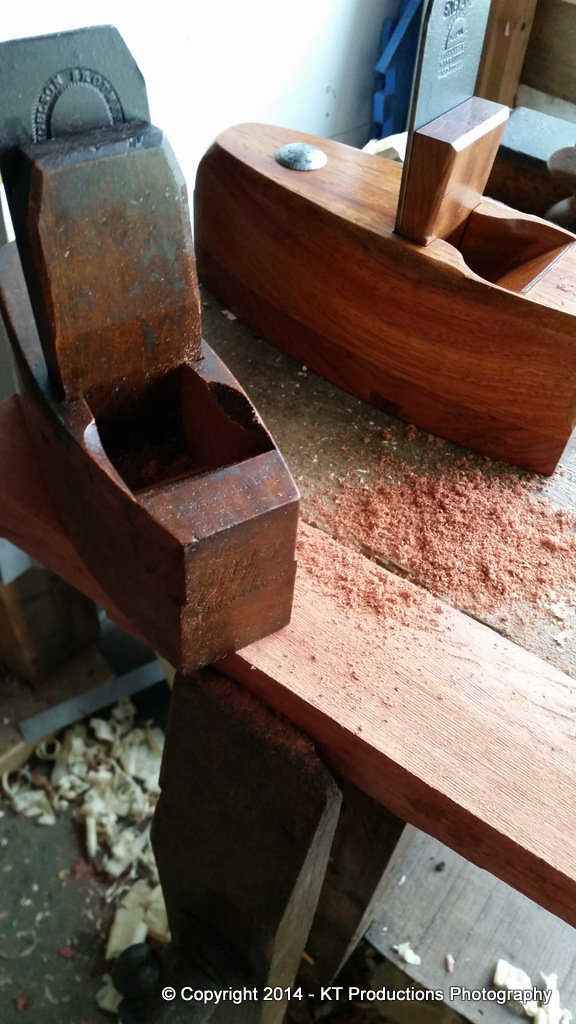
....and I got this far with half a dozen strokes before having to clear the shavings which were stuck between the mouth and the leaving edge of the mouth.
Testing the TTC on the same piece of hardwood, I never once had to clear the mouth and the stock removal was far more substantial and the action easier...
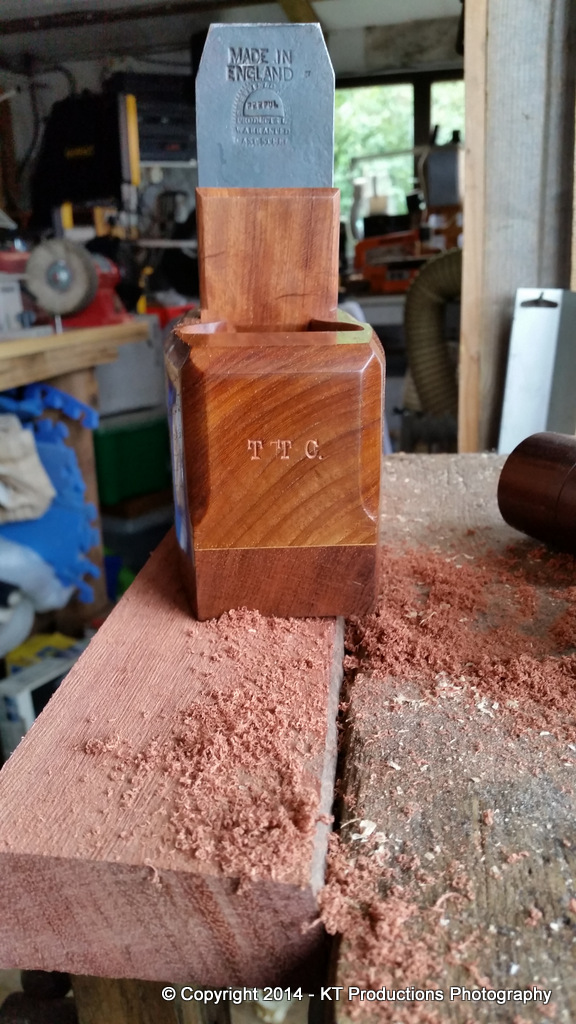
...the extra clearance was the reason for this...the fact that the plane was purpose designed from the bottom up.
It is not relevant comparing surface finish, only to say that they both did their job in working difficult woods and making a fine surface for final finishing with a low angle mitre or to use as a great adhesion area when veneering.
But....if I were a furniture maker today and had the two to choose from I would go for the TTC anytime...simply because the work time would be significantly reduced resulting in substantial labour saving and thus paying for itself in no time.
In conclusion....both planes performed as expected but the TTC is a toother proper and the Griffiths a toother in smoother's clothing and that alone is worth choosing the modern version.
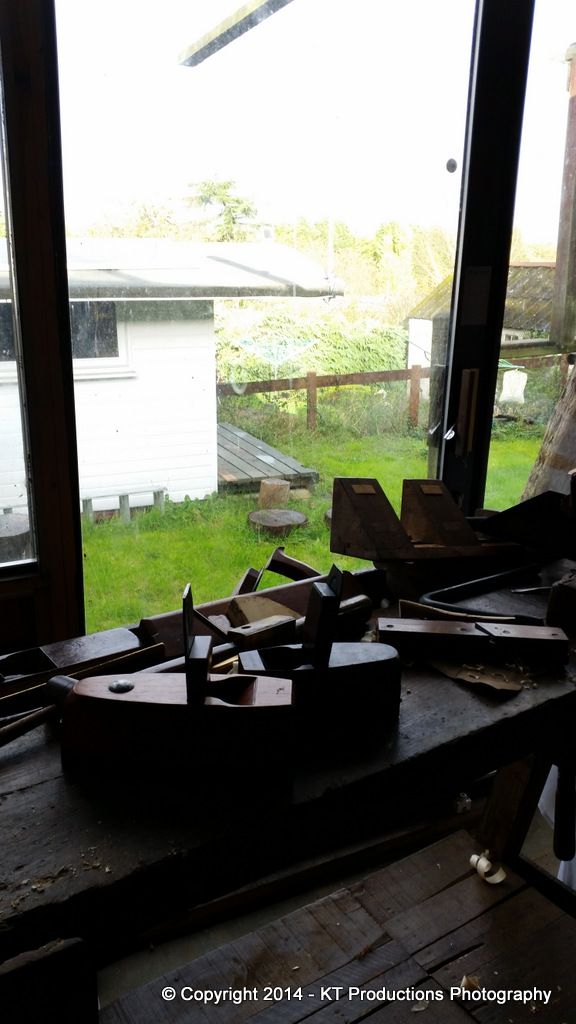
I shall be keeping both but I reach for the TTC a lot...they are both gorgeous and the Griffiths will be here in another 100 years but then so will the TTC and it will be worth substantially more, and investment commanding "Norris" prices as one expects from a true heritage piece.
Jimi
The recent thread on his beautiful traditional chamfer plane set me thinking....I bet there are quite a few people out there who wonder why anyone would spend their hard earned money on these...or any other bespoke tool, when perfectly serviceable originals are relatively freely available for modest sums.
So I thought I would address this by putting my views forward in the hope that others wondering the same thing can feel a bit more comfortable investing in such masterpieces.
I recently acquired a beautiful Griffiths of Norwich coffin toother armed with a rather nice Moulson Brothers toothing iron....

...so I was in a good position to do a bit of a comparative study and review.
Firstly, let me describe the competition.
Griffiths of Norwich were a very prolific maker 1803-1958 and I have a bit of a soft spot for them as they have documented associations with Christopher Gabriel.....my most favourite maker.
The quality is therefore given and the Moulson Brothers iron is spectacular!

So this example of antipodean craftsmanship stands against no slouch as an opponent!
So let's compare the build quality and differences:

The TTC toother is substantially meatier...not exactly larger but it has more substance, partly owing to the use of beautiful hardwoods but mostly because of clever design. There is a more substantial toe section resulting from the clever throat design and this adds to the weight and positive momentum of the tool.
The Griffiths is a standard quality coffin shape...beautifully executed but a tad less positive when used.
The throat design is the part which has undergone the most development and intensive trial and testing....much of which was discussed and debated on this very forum, and I have to say taken on board. This has lead to some major and significant improvements over the tried and tested coffin throat.

Traditional plane makers have adopted a more generic approach in making the throat. Presumably they mostly made standard coffin smoothers and in making the toothing plane in smaller numbers, merely changed the pitch of the iron, leaving the rest of the design the same.

As can be seen, the mouth clearance on the TTC example is larger and the throat delicately shaped into a sweeping curve, opening out as it approaches the top of the toe. The cheeks are beautifully flared.
The results of these subtle changes are quite substantial and obvious. The Griffiths plane works fine...removing stock freely and evenly but the mouth clogs almost immediately....

....and I got this far with half a dozen strokes before having to clear the shavings which were stuck between the mouth and the leaving edge of the mouth.
Testing the TTC on the same piece of hardwood, I never once had to clear the mouth and the stock removal was far more substantial and the action easier...

...the extra clearance was the reason for this...the fact that the plane was purpose designed from the bottom up.
It is not relevant comparing surface finish, only to say that they both did their job in working difficult woods and making a fine surface for final finishing with a low angle mitre or to use as a great adhesion area when veneering.
But....if I were a furniture maker today and had the two to choose from I would go for the TTC anytime...simply because the work time would be significantly reduced resulting in substantial labour saving and thus paying for itself in no time.
In conclusion....both planes performed as expected but the TTC is a toother proper and the Griffiths a toother in smoother's clothing and that alone is worth choosing the modern version.

I shall be keeping both but I reach for the TTC a lot...they are both gorgeous and the Griffiths will be here in another 100 years but then so will the TTC and it will be worth substantially more, and investment commanding "Norris" prices as one expects from a true heritage piece.
Jimi

































